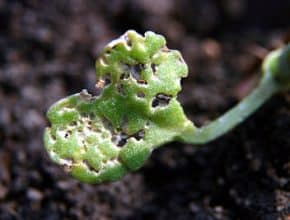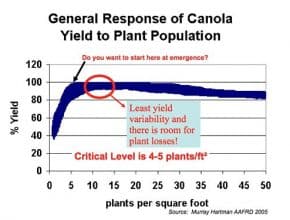Cleaning out the sprayer protects a sensitive crop, it protects people working with the sprayer, and it protects the sprayer and its components. The following article by AAFC's Tom Wolf provides some handy tips…
June 15, 2011 - Issue 12
-
-
Weed control is top of mind for most growers. Many will finish their first in-crop herbicide pass this week, weather permitting. Insects are a close second to weeds. Flea beetles……
-
Peace (B.C. and Alberta): The entire region could do with an inch of rain and some heat. Many fields have spotty emergence, and with cool, dry weather, many canola crops……
-
Spraying has been required in pockets all across the Prairies, particularly for redbacked cutworms in the Peace region, central Alberta around Vermilion and Vegreville, and west central Saskatchewan. Flea beetles have been sprayed on early-seeded and slow developing canola. And the Peace region has grasshoppers eating fields already…
-
For weeds that do not "wet" easily avoid using very coarse droplets, and use high water volumes…
-
A water rinse is not usually enough to remove herbicide residue from the sprayer system. Herbicides can bind to the tanks and hoses, and most need water plus a cleaning solution to remove them. If not, you never know when the bound herbicide molecules will be released…
-
When canola is at multiple stages within one field and when weeds are at multiple stages, it can be a challenge to choose the right spray timing. The key is to assess the stage that represents the majority of canola plants…
-
Please visit the Canola Encyclopedia for more information on herbicide carryover risk factors and symptoms…
-


